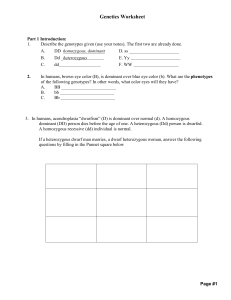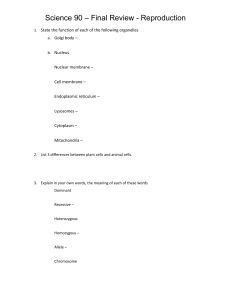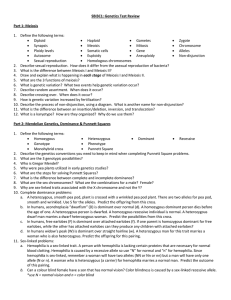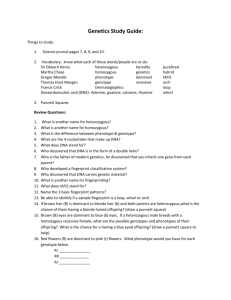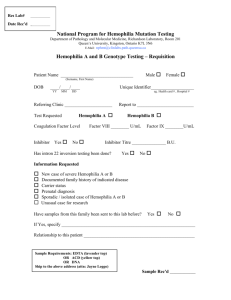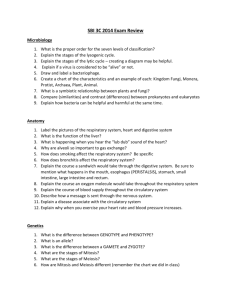Word file
advertisement
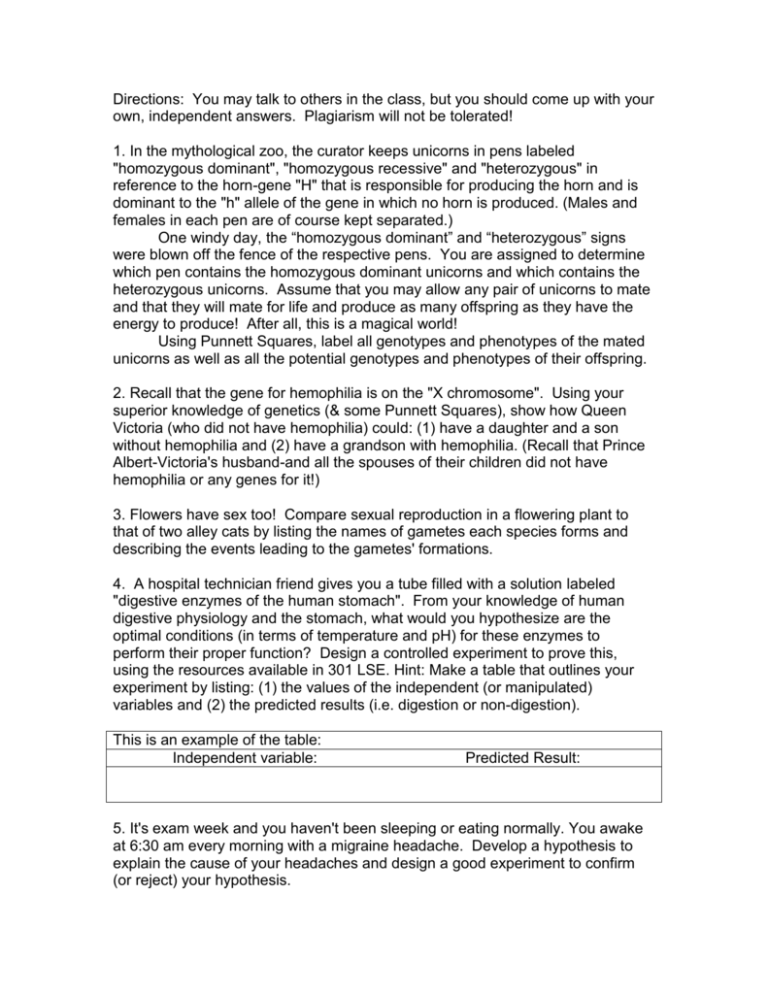
Directions: You may talk to others in the class, but you should come up with your own, independent answers. Plagiarism will not be tolerated! 1. In the mythological zoo, the curator keeps unicorns in pens labeled "homozygous dominant", "homozygous recessive" and "heterozygous" in reference to the horn-gene "H" that is responsible for producing the horn and is dominant to the "h" allele of the gene in which no horn is produced. (Males and females in each pen are of course kept separated.) One windy day, the “homozygous dominant” and “heterozygous” signs were blown off the fence of the respective pens. You are assigned to determine which pen contains the homozygous dominant unicorns and which contains the heterozygous unicorns. Assume that you may allow any pair of unicorns to mate and that they will mate for life and produce as many offspring as they have the energy to produce! After all, this is a magical world! Using Punnett Squares, label all genotypes and phenotypes of the mated unicorns as well as all the potential genotypes and phenotypes of their offspring. 2. Recall that the gene for hemophilia is on the "X chromosome". Using your superior knowledge of genetics (& some Punnett Squares), show how Queen Victoria (who did not have hemophilia) could: (1) have a daughter and a son without hemophilia and (2) have a grandson with hemophilia. (Recall that Prince Albert-Victoria's husband-and all the spouses of their children did not have hemophilia or any genes for it!) 3. Flowers have sex too! Compare sexual reproduction in a flowering plant to that of two alley cats by listing the names of gametes each species forms and describing the events leading to the gametes' formations. 4. A hospital technician friend gives you a tube filled with a solution labeled "digestive enzymes of the human stomach". From your knowledge of human digestive physiology and the stomach, what would you hypothesize are the optimal conditions (in terms of temperature and pH) for these enzymes to perform their proper function? Design a controlled experiment to prove this, using the resources available in 301 LSE. Hint: Make a table that outlines your experiment by listing: (1) the values of the independent (or manipulated) variables and (2) the predicted results (i.e. digestion or non-digestion). This is an example of the table: Independent variable: Predicted Result: 5. It's exam week and you haven't been sleeping or eating normally. You awake at 6:30 am every morning with a migraine headache. Develop a hypothesis to explain the cause of your headaches and design a good experiment to confirm (or reject) your hypothesis. 6. Compare and contrast enzymes with other generic forms of proteins. What are the two basic characteristics common to all enzymes? Describe where you might find the different forms of proteins in a human body and give pertinent examples. 7. Diagram the location and functions of the different chambers into which the human heart is divided. Using blue and red colors, show the flow of blood into and out of each chamber. Identify the sources and destinations of the blood supply for each chamber. Why is the human heart described as a "double pump"? 8. During the EKG exercise, you measured your heart's electrical activity (as transmitted through your skin). What is the origin and importance of electrical signals produced by your heart? What happens to those electrical signals during a heart attack? Why? 9. The below is a pedigree tracing a recessive, non-X-linked, trait called attached earlobes. The squares refer to males and the circles refer to females. AE denotes attaced earlobes and FE denotes free earlobes. Is there an error in the pedigree? If so, where is it? And explain why it is an error. 10. If you’re are the product of the sexual union between your parents, then explain why you do not look identical to your same-sex siblings. Why is there phenotypic variation among your same-sex siblings? (hint: think meiosis)
